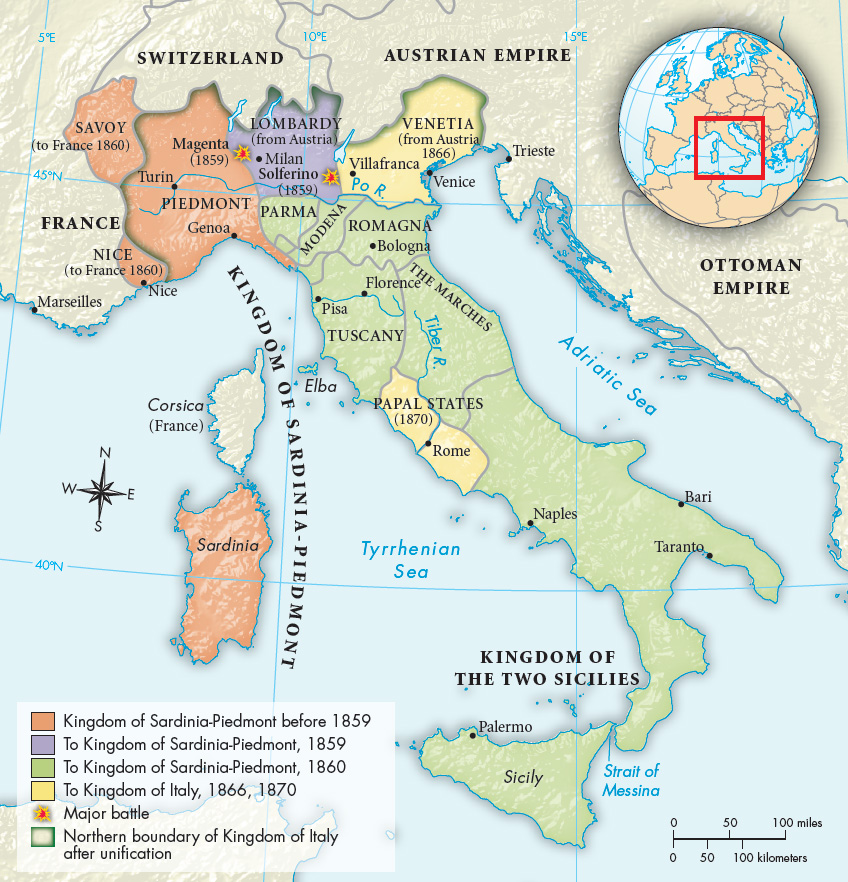A History of Western Society: Printed Page 756
A History of Western Society, Value Edition: Printed Page 762
Italy to 1850
Before 1850 Italy had never been united. The Italian peninsula was divided in the Middle Ages into competing city-states. A battleground for the Great Powers after 1494, Italy was reorganized in 1815 at the Congress of Vienna into a hodgepodge of different states. Austrian foreign minister Prince Klemens von Metternich captured the essence of the situation when he dismissed Italy as only “a geographical expression” (Map 23.1).

Between 1815 and 1848 the goal of a unified Italian nation captured the imaginations of many Italians. There were three basic approaches. First, the radical and idealistic patriot Giuseppe Mazzini called for a centralized democratic republic based on universal male suffrage and the will of the people. (See “Primary Source 23.1: The Struggle for the Italian Nation.”) Second, Vincenzo Gioberti, a Catholic priest, called for a federation of existing states under the presidency of a progressive pope. Many Italians, though, looked to the autocratic kingdom of Sardinia-Piedmont for leadership, much as many Germans looked to Prussia.
This third alternative was strengthened by the failures of 1848, when Austria smashed Mazzini’s republicanism. Sardinia’s king, Victor Emmanuel II, crowned in 1849, retained the liberal constitution granted by his father under duress the previous year. This constitution combined a strong monarchy with a fair degree of civil liberties and parliamentary government, though deputies were elected by a limited franchise based on income. To some of the Italian middle classes, Sardinia appeared to be a liberal, progressive state ideally suited to drive Austria out of northern Italy and lead a united Italy. By contrast, Mazzini’s brand of democratic republicanism seemed quixotic and too radical.
As for the papacy, the initial cautious support for unification by Pius IX (pontificate 1846–1878) had given way to hostility after he was temporarily driven from Rome during the upheavals of 1848. For a long generation, the papacy opposed not only national unification but also most modern trends. In 1864 in the Syllabus of Errors, Pius IX denounced rationalism, socialism, separation of church and state, and religious liberty, denying that “the Roman pontiff can and ought to reconcile and align himself with progress, liberalism, and modern civilization.”